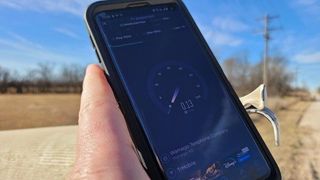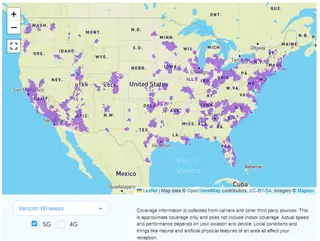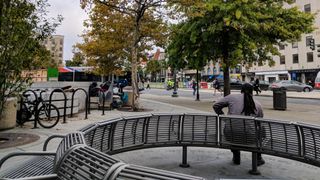Mobile broadband and 5G are still a mess
This week saw the launch of broadband ‘nutrition labels’ to help you understand what you’re paying for when you sign up for a broadband internet plan. You can find them posted in stores or online from companies like T-Mobile or Comcast, and any wireline or wireless provider with more than 100,000 customers is required to […]

This week saw the launch of broadband ‘nutrition labels’ to help you understand what you’re paying for when you sign up for a broadband internet plan. You can find them posted in stores or online from companies like T-Mobile or Comcast, and any wireline or wireless provider with more than 100,000 customers is required to post them.
It got me thinking about the state of high-speed internet in North America – particularly how some of the biggest problems are still the same as they were years ago.
There are two real problems: unavailability and overcrowding. I’m sure industry experts have fancy names for them, but the bottom line is that many people have limited or no access to high-speed internet due to these issues.
In rural areas, there simply isn’t enough to go around. It costs a lot of money to bring a service to an area, and service providers are reluctant to do so without enough customers to pay for it (and thus generate huge profits). We must not forget that the goal of businesses is to get rich and not to provide a service.
The other side of the coin is in places where there are too many people. Fast, reliable service has a user ceiling, and when it’s exceeded, quality starts to degrade. Usually this is just an inconvenience at certain times of day or on certain days, but internet providers are like airlines and will sell, sell, sell, regardless of actual capacity.
Nutrition labels won’t solve this problem. Maybe nothing can fix this. However, this cannot prevent us from demanding more from companies that send us a hefty bill every month.
Rural areas are still screwed
In rural North America, there are two types of Internet service: poor and nonexistent. In 2024, it is almost impossible to enjoy the technological age or the latest new phone when the Internet is in its current state.
It’s getting better, but barely. Take where I live, for example. I live in one of those weird areas where the countryside isn’t really rural: I live in the mountains 43 miles from Washington, DC. It’s a cool place to live, but it was once the place where the internet died.
Until a few years ago, “broadband” simply did not exist. In 2012, the Obama administration launched an initiative make high-speed Internet access possible on all federal highways. It moved away from the highway, and I now have 5G wireless and fiber optic internet at the same address I had to pay for Comcast to bring cable to in 2007.
Not everyone is so lucky, especially those who live far from big cities. There are areas without internet service of any kind, but these are rare. The problem becomes evident when looking for broadband coverage.

Companies like Starlink are making things better, but Starlink is expensive and requires a lot of maintenance. It’s not like DirecTV, where it works.
I understand the problem: there just aren’t enough people to justify it. But that’s not what we’ve been led to believe wireless broadband will be like in 2024.
Too many people can be just as bad

Everyone has heard stories about poor connectivity at a place like Google I/O or a New York Giants football game. When you have so many people in one place at once, it is very difficult to provide services to everyone.
The point is, you don’t have to have a major tech conference or a football game to make service bad. It only takes one user beyond what the total capacity can handle.
I will use another anecdotal example here. I have friends who live in Washington DC, and at lunch time all week and all day Saturday and Sunday, their service slows to a crawl. This happens because everyone checks their phones at lunch and on weekends an extra million people go to Washington to see the sights.
AT&T provided the infrastructure based on the people who actually live there. Quadruple that number and things get worse. This can be improved by using portable cell towers for things like ball games or during DC’s Cherry Blossom Festival when the crowds are huge, so more infrastructure is the solution.
Nutrition labels are very useful in indicating how the service we are paying for is supposed to work. The only way to fix something is to throw money at the problemHowever.
You probably don’t see these problems – I admit they are edge cases. However, these are the same marginal cases that have affected the same users for a decade. Before moving on to 6Git must be addressed or North America will fall further behind in high-speed connectivity.














